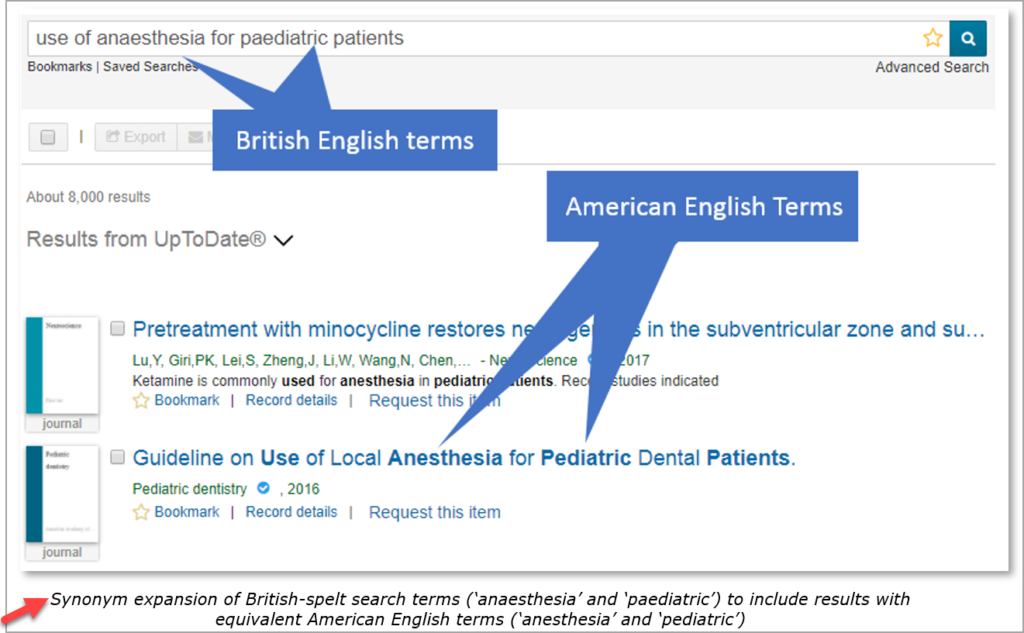Basic Search
To perform a Basic Search using the default settings, enter your search Terms in the text box and then select the Search button.

The Search Results Screen will then appear, displaying those citations matched with the search terms by the Ovid Discovery search algorithm. Results are presented in relevancy ranked order. See the Relevancy Ranking section for more information.
The features of the Ovid Discovery Basic Search are discussed below. For more customized search parameters including searching against specific fields, see the Advanced Search section.
A search can be performed in the Ovid Discovery Basic Search using natural language phrases. In addition, the techniques detailed in the Search Syntax section can also be used for more precise or controlled searching.
The Basic Search includes the following features to assist the searcher:
- Autocorrect: The search attempts to identify when the user has made a spelling error and corrects the search accordingly. An option is provided to rerun the search in the format that was originally entered.
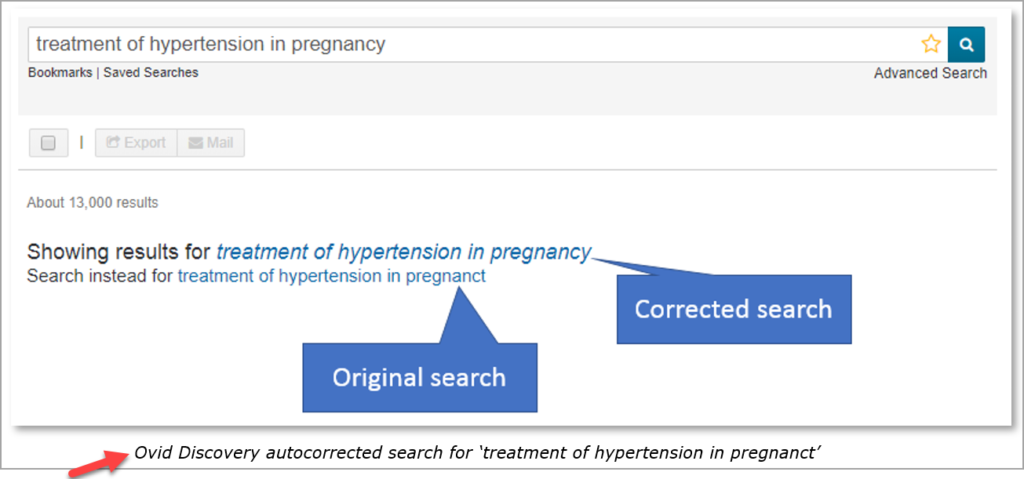
- Predictive Search: A predictive search feature can be activated that anticipates the terms that the user is entering and displays options for selecting suggested search terms. The suggested terms are drawn from the National Library of Medicine Unified Medical Language System (UMLS), which includes concepts from over 100 terminologies, classifications, and thesauri including MeSH. (See here for more information about UMLS: https://www.ncbi.nlm.nih.gov/books/NBK9684/#ch02.sec2.2)
Selecting a suggested term or phrase populates the search box with the selection, where the user can modify the search or enter additional terms before performing the search.

- Suggested items: Suggested resources from the activated holdings are displayed while typing in the Ovid Discovery search box and appear adjacent to the main search results when the user enters search terms like the title of any of the activated holdings. Custom mapping of terms to specific resources is available, for example Australian and New Zealand Journal of Public Health can be shown as a suggested item when the user enters the phrase ‘public health’.

- Synonym expansion: The search is assisted by the inclusion of relevant and related terms from the following sources, to ensure that relevant results are delivered that may not include the exact terms that the user has entered:
- Medline Subject Thesaurus (MeSH): Related terms from the MeSH thesaurus are included. If any terms in the user’s search string match any of the MeSH Headings or related terms in the MeSH thesaurus, the equivalent related terms and MeSH Heading are added to the search.
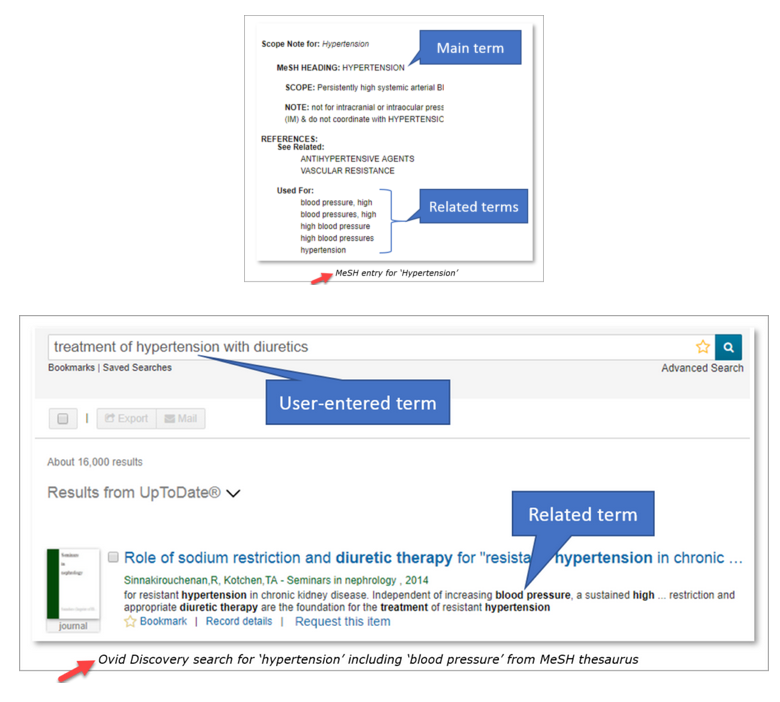
- Ovid Nursing Lexicon: A proprietary nursing lexicon based on the Ovid Nursing Subject Thesaurus is used to provide synonym expansion using a vocabulary specialised for nursing. For example, if ‘nicu’ is entered, the Ovid Nursing Lexicon recognises that this term is an acronym for ‘neononatal intensive care unit’ and adds this phrase to the search.
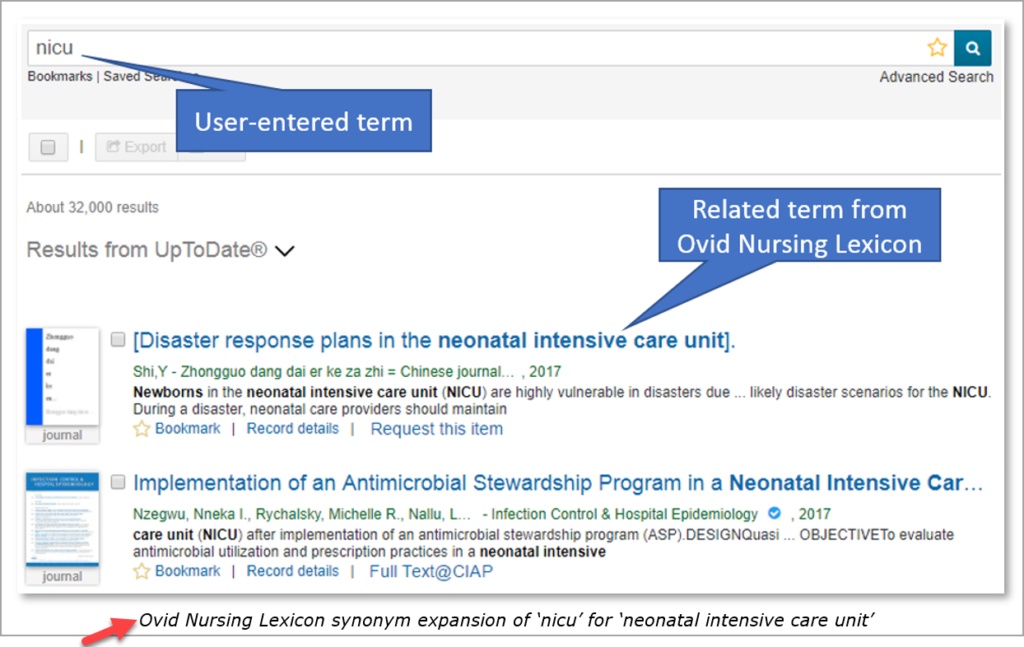
- Emtree: The Emtree thesaurus can be enabled with a subscription to Emcare or Embase on Ovid. Emtree is the world’s largest biomedical thesaurus with over 75, 000 controlled terms, 32, 000 of which are for drugs and chemicals. The inclusion of the Emtree thesaurus for synonym expansion can greatly increase search retrieval particularly when searching with drug terms.
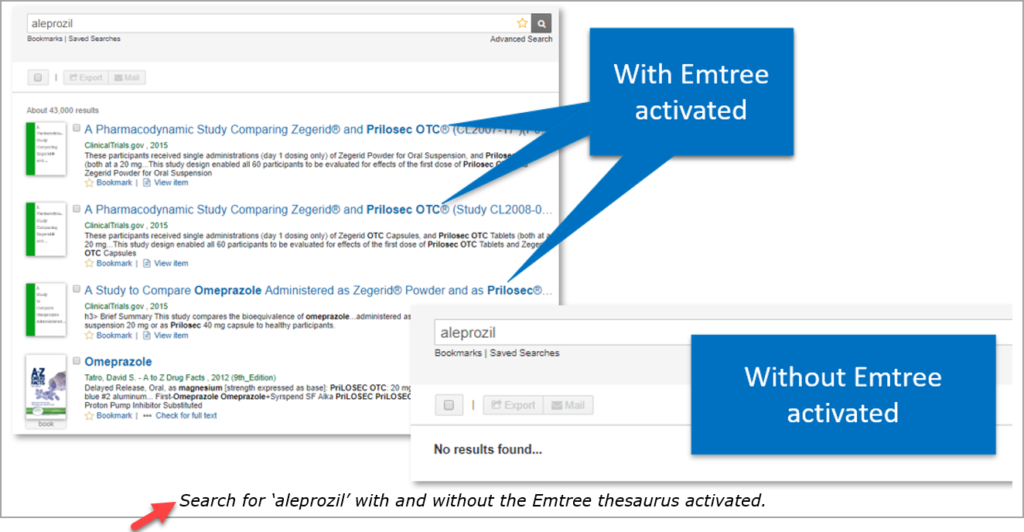
- British and American spelling equivalents are included in the search. The user can enter terms using British English, and results with the equivalent American-spelt terms will be retrieved, and vice versa.
